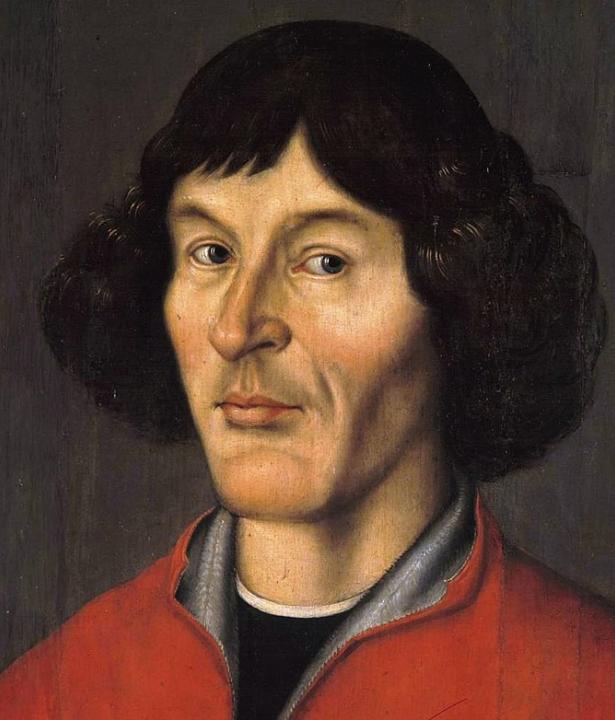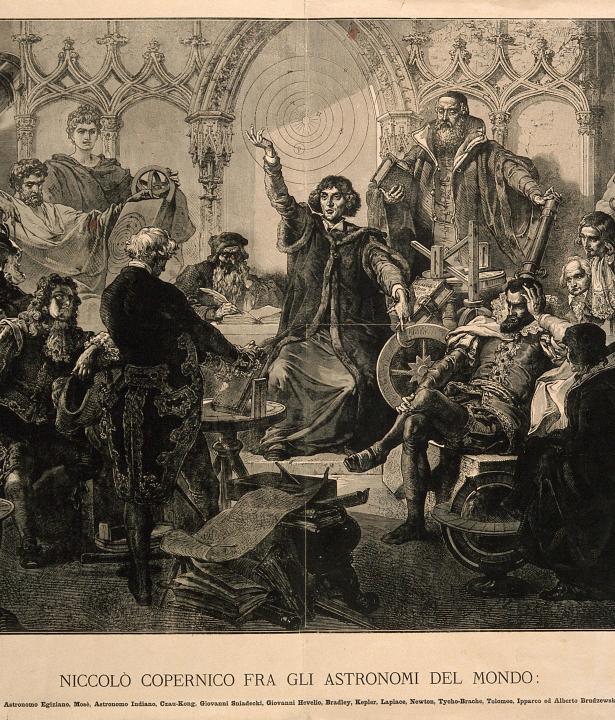What is the name of the astronomer who introduced the heliocentric worldview? In principle, there can only be one answer to this question. But, when it comes to the actual spelling of the name Copernicus, it varies massively depending on where you look.
Text
As was common back in the 16th century, Copernicus didn’t have a standardized way of spelling his name. Documents and records about him contain numerous different spellings. Despite this, as history progressed, the choice of how to spell Copernicus’ name was rarely left to chance: The decision to opt for one spelling or another was often tied to the question of who Copernicus was and what he represented.
Niklas Koppernigk
Text
Koppernigk is one of the spellings documented for the German-speaking family of Copernicus. He received his name from his father, a merchant who moved to Thorn from Cracow in 1455; in other words, Copernicus was known as Niklas Koppernigk the Younger. However, there is hardly any evidence of this form of the name having a direct link to Copernicus. Despite this, it is used when discussing Copernicus’ heritage of being from Toruń’s German-speaking middle class, especially in German biographies of Copernicus, such as the one written by Leopold Prowe.
Nicolaus Copernicus
Text
During his studies and when entering into academic and ecclesiastical circles, Copernicus began to use a Latinized spelling of his name. This was common practice among humanist scholars at the turn of the 16th century.
This spelling has become the standard way of spelling his name in transnational communications within the world of science. The evidence in favor of this version of his name includes the fact that it is present in writings by Copernicus himself – although it is not the only name to feature. Additionally, the author’s name on the cover of the first edition of De Revolutionibus, which was published in 1543 and overseen by Copernicus’ close confidant Georg Joachim Rheticus, is written in this way.
The “Coppernicus” variation
Text
As Copernicus biographer Leopold Prowe proved, Copernicus often spelt his name with a double P. The apparently especially German-sounding nature of this version meant that, for a time, it was preferred within the German-nationalist context. The Kopernikus-Verein für Wissenschaft und Kunst zu Thorn (Toruń Copernicus Association for Science and Art) adopted the spelling “Coppernicus” in 1878. In the run-up to the 400th anniversary of Copernicus’ death in 1943, an argument erupted between different authorities and officials in Nazi Germany over the use of the double P.
Following the end of the Second World War, this version of the name quickly faded into the background as a result of new studies of sources and international exchanges. The successor to the former Toruń Association, the Coppernicus Association, which was founded in Münster in 1961, switched to the spelling “Copernicus” at the start of the 1970s.1
Mikołaj Kopernik
Text
In the first half of the 19th century, Copernicus was revealed as a symbol of national identity for the newly reformed state of Poland, which had not existed since 1795. The spelling preferred in Poland since then – Kopernik – which remains the preferred spelling to this day, can, like other variations, be derived from original sources. However, the Polish first name Mikołaj was a new creation. This spelling has also been adopted in other Slavic languages.
A deviation from this spelling can be found on the famous painting by Jan Matejko, which depicts Copernicus in the tower where he lived in the cathedral district of Frauenburg: The representation of the heliocentric system, shown here as a picture within a picture, is titled “Mikołaj Copernik.”
Nikolaus Kopernikus
Text
The modern German spelling “Kopernikus” is believed to have first been used in 1776 by Johann Gottfried Herder, in the journal “Der Teutsche Merkur.” When Immanuel Kant compared the developments that he had made in the field of epistemology with Copernicus’ shift to the heliocentric worldview in the foreword to the second edition of his Critique of Pure Reason, which was published in 1787, he spelled Copernicus’ name with two Cs. Despite this, Kant’s new approach is still referred to as the “kopernikanische” (and not the “Copernicanische”) Revolution in German philosophy textbooks.
According to cultural theorist Elisabeth Ritter, “Kopernikus” and the adjective “kopernikanisch” (EN: Copernican) now stand for an abstract cultural heritage and a general principle, which stand separate from the historical figure of Nicolaus Copernicus himself.
Nicolas Copernic, Niccolò Copernico
Text
Different variants of Copernicus’ name were also created in other European languages. Similar to exonyms, which are given to cities by other countries (e.g., Wipers for the Belgian town of Ypres or Londres for London)2 , they show that there was a connection with the named object or respective person. Thus, from early on in France and Italy, Copernicus was viewed at least as part of the universal world history, if not as part of their countries’ own history.
Copernicus is still known as Nicolas Copernic in France. This spelling dates back to at least the 18th century. Interestingly, “Copernic” also appeared in an exchange of letters (in French) between the Prussian King Friedrich II and the writer Voltaire: In a letter dated August 12, 1773 – in other words, shortly after the first partition of Poland – Friedrich wrote that he wanted “to erect a memorial on the grave of the famous Copernic in a small town in Varmia” – meaning Frauenburg.3
The spelling Niccolò Copernico is common in Italy. The fact that Copernicus spent time as a student in Italy may have contributed to the establishment of this version of his name. This time that Copernicus spent in Italy was already seen as part of its cultural heritage as early as the 19th century, for example at the University of Bologna.
Text
English translation: LEaF Translations





